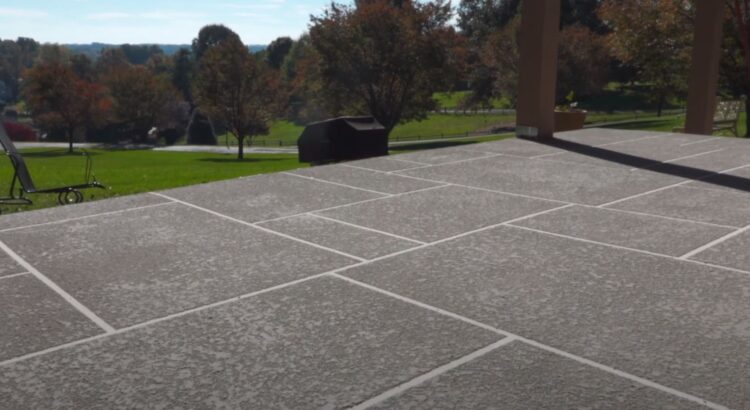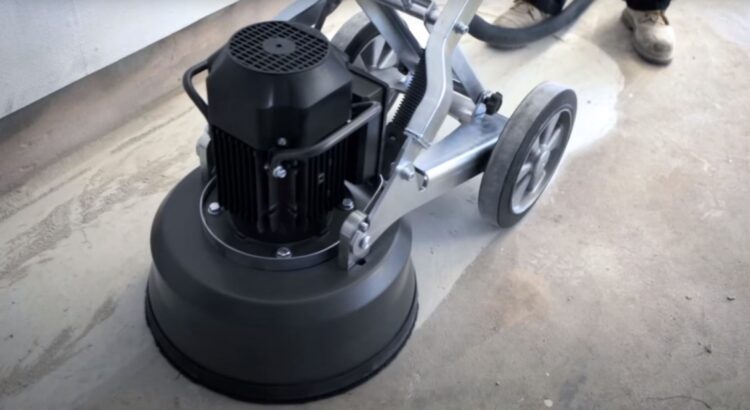Decorative overlays, especially in bustling Auckland, have become a go-to solution for those seeking a chic finish for their concrete floors without the hefty price tag of total replacement. Not only are they a cost-effective renovation method, but they’re also lauded for their environmental benefits, limiting the amount of waste and energy typically expended in a full flooring overhaul.
Understanding Decorative Overlays
At their core, decorative overlays are thin, yet durable, coatings applied atop existing concrete surfaces. The intent? To rejuvenate and provide an elegant touch, often mimicking pricier materials such as marble, brick, or even rustic wood. The variety is extensive, from simple colour tints to intricate textured patterns.
Costing Out Decorative Overlays in Auckland
- Basic Overlays: These are the simplest form of overlays, offering a renewed look with a fresh coat and basic design. After the adjustment, these typically range between NZD 117-143 per square metre.
- Stamped Overlays: Mimicking textures, such as brick or natural stone, stamped overlays tend to be on the higher side of the price scale. Costs hover around NZD 156-286 per square metre.
- Micro-toppings: These ultra-thin overlays give a smooth or subtly textured finish. Expect to part with NZD 130-169 per square metre.
- Self-levelling Overlays: Perfect for uneven floors, these overlays level out surfaces while providing a polished look. They usually cost around NZD 182-260 per square metre.
Environmental & Sustainability Edge
Opting for a decorative overlay is a nod to environmental sustainability. By revamping the existing floor, homeowners reduce waste and the need for new materials. In the bigger picture, it means less debris heading to landfills and reduced carbon footprints from manufacturing and transportation of new flooring materials.
Auckland’s Bylaw Maze
Auckland, with its unique blend of urban and coastal environments, has specific bylaws in place to safeguard its distinct character. For instance, in suburbs like Mount Eden or Parnell, specific rules might govern the type of materials or finishes to maintain the area’s aesthetic charm. Always ensure you’re abreast of the regional council’s specific codes before diving into the overlay project.
Health & Safety: More than Just a Byword
Floor polishing, especially when opting for overlays, needs to align with Auckland’s strict health and safety standards. This includes ensuring slip-resistant finishes, especially in wet areas, and the use of non-toxic sealants and materials that don’t compromise indoor air quality. These safety additions, while they do add to the overall cost, are indispensable for a safe living environment.
Breakdown of Costs
| Overlay Type | Cost per Square Metre (NZD) |
| Basic Overlays | 117-143 |
| Stamped Overlays | 156-286 |
| Micro-toppings | 130-169 |
| Self-levelling | 182-260 |
Note: These prices are indicative and can vary based on specific project requirements, floor conditions, and chosen finishes.
In Conclusion
When navigating the labyrinth of floor polishing options in Auckland, overlays emerge as an effective bridge between aesthetics, cost, and environmental responsibility. By understanding the intricacies of the process, from the floor polishing contractor you choose to the floor polishing cost for your specific requirement, you position yourself for a home renovation that stands the test of time.
Frequently Asked Questions on the Cost of Decorative Overlays
How much does a basic decorative overlay typically cost in Auckland?
Answer: A basic decorative overlay usually starts at around NZD $130-$156 per square metre. However, this is a general estimate; the actual cost can vary based on the intricacies of the project and the specific materials chosen.
Are there additional costs to consider when opting for a decorative overlay?
Answer: Yes, there are additional costs. For instance, if there’s a need for extensive floor preparation or repair before applying the overlay, this can raise the price. Custom designs, patterns, or premium finishes can also increase the cost, often taking it up by an additional NZD $26-$39 per square metre or more.
Is applying a decorative overlay more economical than replacing the entire floor?
Answer: In most cases, yes. Applying a decorative overlay can be more cost-effective than completely replacing a floor, especially if the existing surface is still structurally sound. However, it’s essential to consider the long-term maintenance and potential lifespan of each option.
Does the type of finish on the decorative overlay impact the overall cost?
Answer: Absolutely. Different finishes, be it matte, glossy, or textured, can influence the price. Some finishes require additional materials or more labour-intensive processes, which can add to the cost. Always ask for detailed pricing based on your preferred finish when getting quotes.

